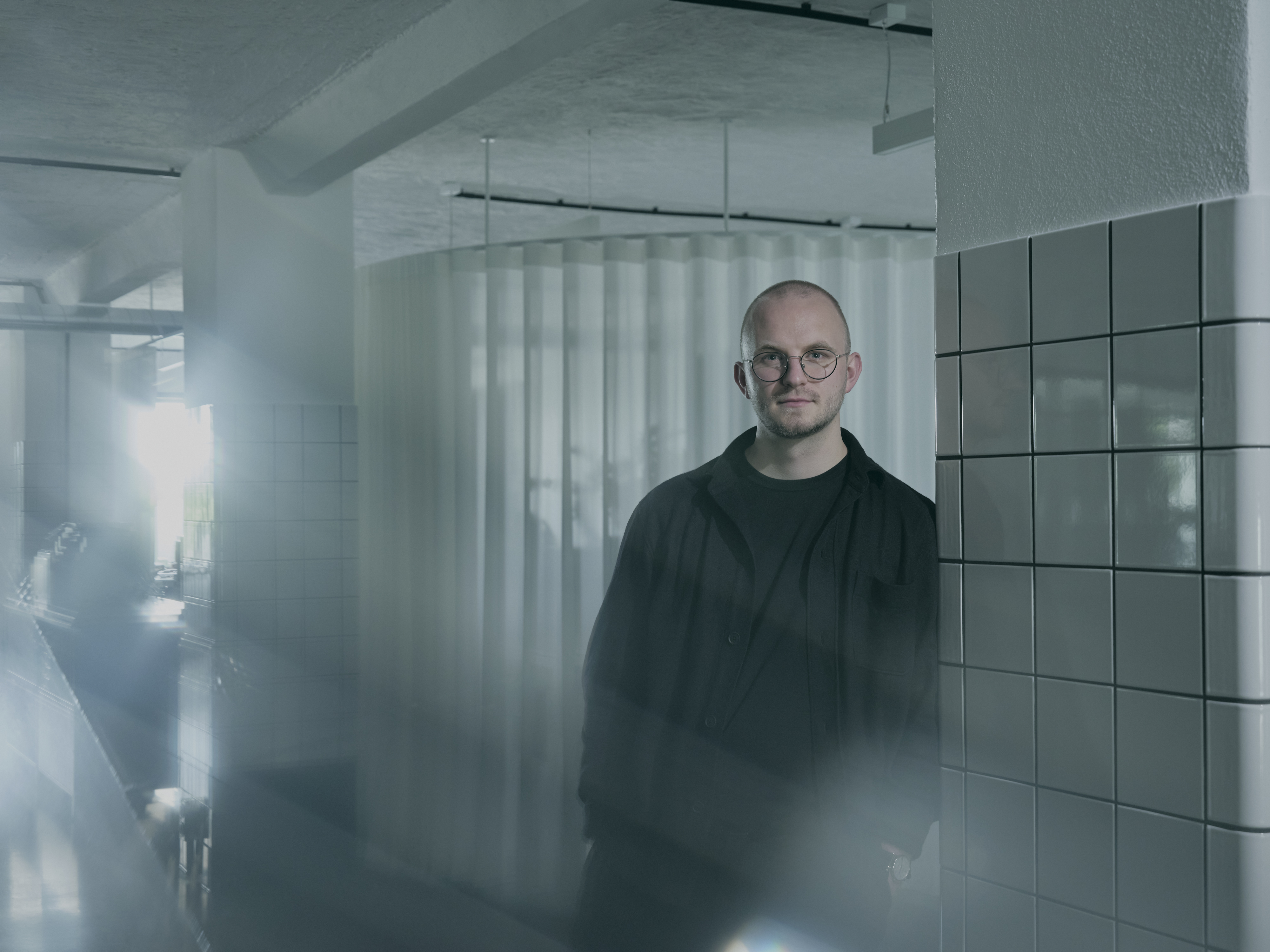Bussiness
Inside Germany’s Sprind innovation agency, the anti-Horizon Europe
About a 15-minute walk from Leipzig’s main train station, past office blocks, hardware stores and garden centres, sits a former railway logistics building near the end of a dilapidated road in a warren of tired-looking warehouses. As you approach, there’s little to suggest that it contains Germany’s great hope for re-invigorating its economy.
Enter the Federal Agency for Disruptive Innovation (Sprind), however, and suddenly the vibe shifts – it’s like walking into a start-up pitch. A youthful team, among whom it’s impossible to feel underdressed, is working away in an office of exposed whitewashed brickwork, huge Monstera plants, and – of course – table football.
With Germany and the EU anxious about weak growth and the technology gap with the US, Sprind was created in December 2019 to pioneer new ways of funding and supporting teams trying to create what are dubbed “breakthrough” innovations – technologies that are both radically commercially successful, and improve our lives.
“We need to find people that basically are willing to create a new industry,” said Jano Costard, Sprind’s head of challenges. “And that’s not easy”.
The agency has cross-party support in Germany. It was set up under Angela Merkel’s conservative government, and has enjoyed dramatic budget increases under the current social-democrat led coalition. It now employs around 80 people, and is expecting a healthy budget increase to €250 million next year, even as other budgets are squeezed.
But with a five-year assessment coming up at the end of the year, the pressure is on to prove it’s achieving results traditional funders can’t.
It’s Costard’s challenges that arguably set Sprind most apart from traditional research and innovation funding programmes, like the EU’s Horizon Europe.
Modelled partially on the US’s Defense Advanced Research Projects Agency, they call for teams of innovators to solve specific technological challenges, like creating long-term energy storage to solve the problem that wind and solar are intermittent.
These teams then compete to get through to a second or third round of the challenge, unlocking increasing tranches of funding – from hundreds of thousands of euros, to millions in later rounds – and further support, along the way.
“Typically when people get grants, they compete for the grant beforehand, but after they have been awarded the grant, the competition is stopped,” explains Costard, an economist by training who previously worked for Germany’s Commission of Experts for Research and Innovation, which assesses the country’s R&D landscape. “We continue that competition, because we care about the execution.”
Lightening fast grants
As well as continuous competition, the agency has tried to set itself apart with the speed and flexibility of its grants. A typical application for a challenge is an eight-page PDF – no more, says Costard.
Following a call, winners are typically selected and contacted after 10 days. Successful teams can then sign on the dotted line of pre-created funding contracts, and get money in their bank accounts within two weeks of submitting an application.
Sometimes, it might take longer, up to four weeks. “But I think four weeks for one and a half million euros is still reasonable,” he said.
“We talk to teams that we fund, and when they have applications with other public funders, it might take one and a half years until they get feedback on whether they actually get the grant money,” said Costard. “And for a typical small startup, they’re bankrupt before the money comes”.
This has been an issue for the European Innovation Council, which suffered major delays when it started up in 2021, he pointed out.
No reporting
Successful teams are also not asked to offer any proof of how they spend their money. “The bureaucracy needs to be as minimal as possible,” said Costard.
But it’s not “blind trust,” he insists. Instead of reporting requirements, the agency manages to keep tabs on them through its in-house teams of technical experts, which offer scientific and business guidance. “We know exactly what the teams are doing. And we can therefore do output monitoring rather than input monitoring,” he said.
In this respect, Sprind’s challenges are a bit like a business incubator, offering commercial advice and links to private investors – albeit an incubator with serious money to spend.
The agency also tries to make it easy for teams to switch plan mid-project. With other funders, “if you want to change that plan, you have to apply again, which is a nightmare if we want to solve the pressing issues of our time in a speedy fashion,” said Costard.
Glowing reviews
Grantees are rarely rude about their funders. But teams taking part in Sprind’s challenges gave the agency rave reviews.
“The Sprind funding pushed us from being too early, to being at the right development level for seed or series A funding,” said Philipp Hahn, chief executive of enaDyne, a startup trying to convert carbon dioxide into hydrocarbons needed by the chemical industry, eliminating the need for fossil fuels.
The company is currently in the second round of Sprind’s “Carbon-to-value” challenge, which hopes to create a market for carbon dioxide removal by creating valuable products out of the gas.
Other public funders have taken years to respond to grant applications, he said, but at Sprind, the whole process of applying to getting money took about a month. Public funders also often require startups have already secured private money, but for unproven technologies, this is often impossible. Sprind bridged the gap.
David Taylor, chief executive of Unbound Potential, which is competing in the long-term energy storage challenge, said he’d found Sprind’s model “pretty cool and quite unique”.
“It’s an incubator coupled with a grant,” he explained, with next to zero bureaucracy. “We can all work on the actual topic,” he said.
Sprind focuses first and foremost on the technology, rather than first scoping out if it has a market, and some venture capital firms have criticised this as “a bit dangerous,” said Taylor. But the challenge areas – like long-term energy storage – are in areas of such obvious commercial and social need that a detailed market assessment perhaps isn’t needed, he said.
Winners and losers
In challenge programmes, a big question is how you sort the winners from the losers. What are the criteria?
At Arpa-E, the US’s energy focused innovation agency, said Costard, a similar challenge on long-term energy storage had very strict, objective performance metrics that teams needed to hit.
But at Sprind, an external jury of experts decides who goes through, and who gets knocked out. “We are typically less reliant on predefined KPIs,” he said. This allows some flexibility to wave through technologies that are “really, really interesting”, but haven’t yet hit certain metrics.
However, the agency’s challenges aren’t pure prize-driven competitions in the same sense as, say, the US-based X Prize, which since the 2000s has offered big payouts to teams attempting everything from suborbital spaceflight to oil cleanup in water.
No winning prize
Teams compete to get through each round and win extra funding, with numbers whittled away each time, but there’s no actual prize at the end. The problem with offering only a large prize to one winner is that teams need some money to begin with, said Costard.
Unlike in the US, where angel investors are happy to chuck a million dollars at a project that piques their interest, there’s far less of this very early-stage private money sloshing around Europe.
Sprind is trying to bridge the notorious innovation Valley of Death – it focuses on projects between technology readiness levels 3-7 – and so it’s an “open question” as to whether a single pot of cash on the other side of the valley would be effective, he argues.
Instead, the true win is getting a technology ready for outside investment. “The important prize [is] that they make themselves more independent of public funding, that they show that that technology is ready for VCs and other private funders,” he said.
Success rates
Such quick and simple grant processes might sound like it would unleash an unmanageable blizzard of applications on the agency.
But by specifying exactly what it wants each challenge to achieve, Sprind says it has generally managed to deter all but well-suited applicants.
So far, challenges have had around 350 applications, and 62 teams have been funded, says Costard. “The success rate is way higher” that other programmes run by Sprind, he said.
It’s the outcome that is closely specified, not how you get there, he says – technological neutrality, in other words. “We bet on the race, not on the horse,” as he puts it.
What is a ‘breakthrough’?
Sprind’s mission is to create “disruptive” or “breakthrough” innovations. But nowhere does it explicitly spell out in detail what this means.
This is partly deliberate. There is an internal definition, but the agency doesn’t release it publicly, to prevent applicants tailoring their applications to check their boxes.
But there are certain criteria that the agency is happy to explain. For a start, a breakthrough innovation can’t just be of economic value, while contributing nothing socially. New adtech, for example, wouldn’t past muster, said Costard.
“There are tons of topics out there that might be commercially interesting that we wouldn’t touch, because that does not fulfil our criteria for breakthrough innovation, which should be for the benefit of society,” he said.
Clues to the agency’s approach can be found in On The Brink of Utopia, a book co-authored by the agency’s prominent founding director, Rafael Laguna de la Vera.
In it, he sets out a vision for a “radical shift in the culture of innovation” that solves real-world problems, rather than the current day “innovation theatre” of not particularly useful apps, gadgets and new digital platforms.
Defence and geopolitics
With the EU menaced by an aggressive Russia, the clamour in Brussels is for the R&D system to turn its attention to military technologies. The European Commission has suggested allowing dual use technologies to be a part of the successor to Horizon Europe, which should start in 2028.
Sprind does back dual use innovation – there’s an ongoing challenge on fully autonomous drone flight – but there’s no plans for it to take on anything explicitly military. “It wouldn’t or shouldn’t happen within Sprind as it is today,” said Costard. However, a more explicitly military sister agency under “a common roof” has been discussed, he said, but there are no decisions yet.
Curiously, Sprind funds not only German teams, but innovators from all over Europe – including the UK – plus Israel. “It’s way, way more important that we have these technologies at all than where they actually come from,” said Costard.
This generosity doesn’t extend to, say, teams from the US or China, but those outside Europe can still join challenges without receiving funding. Google and Samsung are part of a recent challenge on digital identities, for example.
Procurement red tape
Costard had to get creative to even offer challenges at all. Teams are funded through an obscure financial instrument created by the EU in 2007, called “pre-commercial procurement”.
“It wasn’t used in Germany until we picked it up for the challenges,” he said. “Other countries in Europe used it, but no country till today uses it like we do for innovation funding.”
It’s a tool that, simply put, allows Sprind to get around strict EU procurement and state aid rules, and offer money to teams in the way they want. “That enables us to get rid of a lot of red tape,” he said.
In January, the agency got a new year’s present in the form of the “Sprind Freedom Act”, which frees it from some of the more cumbersome rules surrounding German public spending. Previously, Sprind had to partially take startups it wanted to fund in-house, creating a subsidiary to funnel money to them.
The new law has done away with this onerous requirement, and given the agency other new tools as well, like the ability to offer matched funding with private sources, issue debt funding, and roll over at least some of its budget into the next year if it doesn’t want to spend it all at once.
Project funding
Aside from challenges, Sprind also funds what it calls “projects”, and these are a bit more like the open grant calls that might be backed by a traditional funder. These range from a Phase II Alzheimer’s treatment trial to a laser-based nuclear fusion project.
Still, even here, paperwork is kept to an absolute minimum. Applications typically consist of a list of 15 questions – a format Sprind has borrowed from Darpa. “So often, scientists fail to really state what they want to do, and what’s the real innovation,” says Till Moldenhauer, Sprind’s chief of staff. This format is designed to clarify their thinking. “It’s not like the European Innovation Council with 60 pages for the proposal,” he said.

Initially successful projects go through to what Moldenhauer calls “deep due diligence”, where Sprind’s analysts run the rule over proposals to see if they are feasible, and really could lead to a “breakthrough” innovation. This analysis costs a hefty €200,000, and can take up to a year, but the select few that make it through can unlock serious money. The agency will invest up to €90 million in its laser-driven fusion project.
Unlike the US’s innovation agencies – which focus specifically on defence, energy or health – Sprind funds projects from any conceivable area. And there are no deadlines – it’s a continuously open call.
Perhaps inevitably, then, a lot more project applications come in than for the challenges, and so success rates are drastically lower. Around 6% of projects get through to the deep due diligence round, although that’s an improvement on the 3% rate when Sprind started. Only 1% make it to full funding.
These open projects still account for the majority of Sprind’s spending – after all, clinical trials, or laser-based fusion are expensive to run. But challenges make up an increasing amount of the agency’s overall budget.
Budget hiccups
Sprind’s main funder is, unsurprisingly, Germany’s Federal Ministry of Education and Research, but other ministries are beginning to give Sprind money to pursue their own pet projects. The interior ministry has funded a programme on secure digital identities, for example.
There have been some budget-related hiccups. A challenge on new computing concepts, which ended last summer, was supposed to be followed up by a second challenge where teams actually built computer chips based on their radical new ideas, but isn’t yet the budget for this second round. However, some of the teams that took part have still managed to get private funding for their ideas, said Costard.
The agency is also dabbling in policy work that could pave the way for much bigger funders to solve innovation bottlenecks.
It has funded a challenge to develop broad-spectrum antiviral drugs, which can tackle a range of viruses – a potentially vital weapon, come the next pandemic.
Advance market commitments
However, big pharmaceutical companies and investors typically don’t invest in these broad-spectrum antivirals, because they don’t know when the next pandemic will happen, and because they can’t be sold repeatedly – and lucratively – like drugs that tackle chronic conditions.
“There’s an inherent mismatch between this social benefit and the commercial benefit, which hinders private investments even at the early stage,” explains Costard.
So Sprind is currently helping to work up a business case for what’s called an advance market commitment – a promise to companies that if they create effective broad-spectrum antivirals, they will be bought at a set price.
“With challenges, we don’t create the demand for the product, but that’s exactly what an advance market commitment would be doing,” he explains.
Such a commitment would need at least a billion euros, far out of Sprind’s reach. “We wouldn’t fund it, but we can enable it,” he said. “We create the design, the concept.”
Horizon Europe
With the agency playing around with so many new funding ideas, what do they think of existing research programmes like Horizon Europe?
Costard acknowledges that basic science, like that performed by the European Research Council, has to be curiosity-driven – it’s hard to create a scientific breakthrough by specifying what you want in advance, as Sprind does with challenges.
But he and Moldenhauer question why the rest of Horizon Europe hasn’t toyed around with other funding ideas.
To be fair, the Commission has recently experimented with challenges, pitting AI startups against each other to win access to supercomputers. But the vast bulk of Horizon Europe remains focused on “technology push” grant calls.
“It’s typically scientists who evaluate science and innovation work, and then they climb up the ladder, then make decisions on science funding. And that’s what they know – how to have grant programs”, creating a “path dependency”, said Costard.
The German government and European Commission focus on building and managing big consortia of researchers and industry, but “a lot of money just is spent on the frictions of managing these consortia or large companies,” said Costard. “And the question is whether that is going to be most effective way of spending money.”
“Funding programs are not really focused on results produced,” echoed Moldenhauer. “They’re focused on how is the money spent”. If an entrepreneur wants to fire a team member in order to afford a new scientific machine, Sprind will say, “go for it,” he says.
Does it work?
Even as Sprind enters its fifth year of operation, the fruits of its grants are only just beginning to be used in the real world. “It’s slightly too early to really say if it’s a total success or not,” Moldenhauer cautions.
But there are innovations on the verge of real-world applicability that the agency can point to. Near Leipzig, the world’s biggest wind turbine should hopefully start construction before the end of the year (although local approval is still pending).
The project stems from a Sprind funded project to explore the ideas of an 89-year old engineer, Horst Bendix, who died last year. Bendix hypothesized that vastly taller turbines should produce far more power, and more consistently, than existing models.
“We can be quite confident that nobody else would have funded [the idea],” said Moldenhauer. “In normal research grants, there would be no opportunity [for a man as old as Bendix, nor] in venture capital”.
Another Sprind backed company, Macrocarbon, has set up in the Canary Islands, and should soon launch algae farms to turn carbon dioxide into feedstock for the chemical industry and green aviation fuel. “It has never been done before, which makes it hard to fund in general,” said Costard.
“It’s capex heavy, as many of these energy and climate tech projects are, so that’s often a deal breaker for VCs,” he explains. Sprind gave the project around €3 million through its carbon-to-value challenge.
With Germany and Europe desperate to turn around their economic fortunes – and save the planet while doing so – politicians in Berlin are eagerly awaiting Sprind-backed innovations to break through into the real world. The results of a ministry-commissioned assessment of the agency are expected in December. If successful, Sprind could radically change the entire conversation around innovation in Europe.










